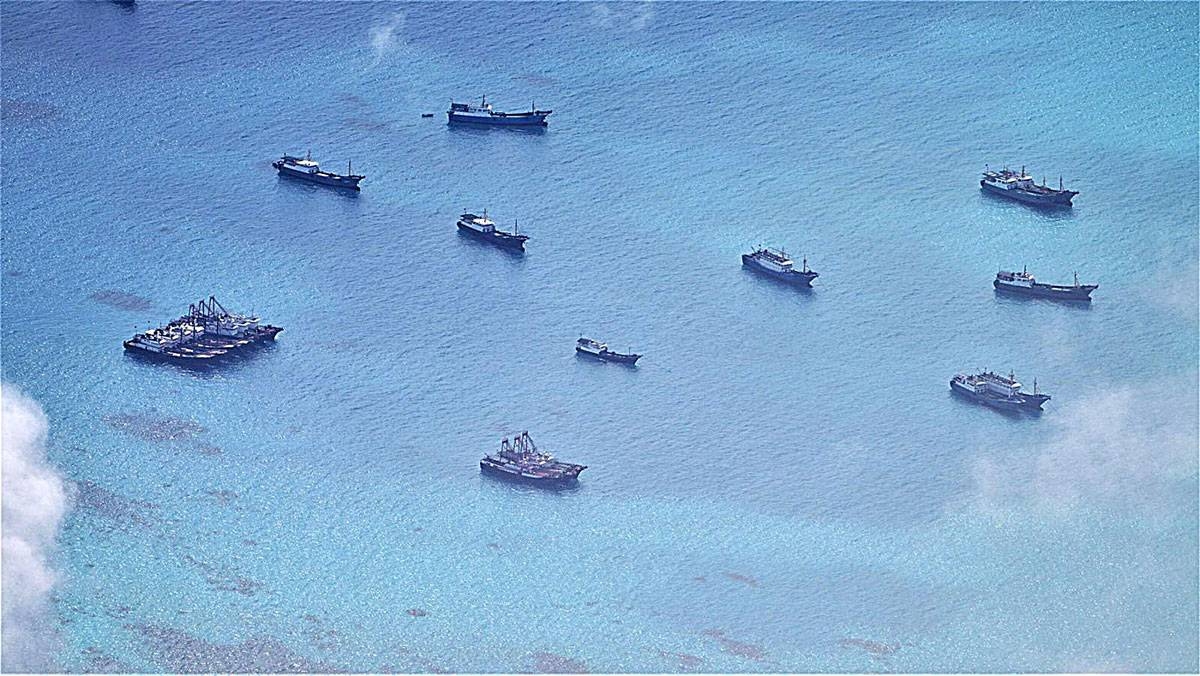A recent incident in the Ayungin (Second Thomas) Shoal has raised concerns as a swarm of Chinese ships ventured inside, which maritime security experts deem to be quite rare and potentially unprecedented. This incident has sparked discussions regarding the intentions and implications of this intrusion.
According to Ray Powell, a maritime security expert and director of Sealight, the Chinese ships remained in Ayungin even after a confrontation with Philippine resupply vessels. Typically, China’s blockading force would return to its nearby base in Panganiban (Mischief) Reef once the Philippine boats and their escorts departed from the area following an encounter. However, this time, the Chinese vessels chose to stay, which is highly unusual.
Based on satellite imagery taken on Monday, it was observed that at least 11 Chinese vessels were inside the shoal, with an additional 27 ships surrounding the area, including those involved in the Sunday incident. This prolonged presence, with some vessels even entering the interior of the shoal, indicates a calculated show of force by Beijing.
“It’s quite rare to see Chinese vessels enter the shoal’s interior at all, but 11 is certainly the highest number we’ve yet observed,” stated Powell, highlighting the significance of this event. He further emphasized that this invasion of the shoal’s interior was a deliberate display of power by China.
The incident on Sunday involved a China Coast Guard (CCG) ship ramming into a Philippine vessel during a regular Rotation and Resupply (RoRe) mission to Filipino troops stationed on board BRP Sierra Madre in Ayungin. Furthermore, Philippine vessels and the resupply boats experienced reckless and dangerous harassment at close range by CCG and Chinese Maritime Militia (CMM) vessels as they approached the shoal.
This incident has raised concerns among experts and stakeholders, as it signifies an escalation in tensions in the South China Sea. Ayungin Shoal is a disputed territory, with both the Philippines and China claiming sovereignty over it. The presence of Chinese vessels in the area not only challenges Philippine territorial claims but also raises questions about China’s intentions and actions in the region.
It is essential to understand the implications of this incident within the context of international law and regional dynamics. The United Nations Convention on the Law of the Sea (UNCLOS) grants coastal states sovereignty over their territorial sea, including the right to regulate and enforce laws within this area. However, disputes arise when countries have overlapping claims, as is the case in the South China Sea.
China’s actions in Ayungin Shoal, along with its assertiveness in other disputed areas, have drawn international criticism. The international community has called for a peaceful resolution to these disputes through dialogue and adherence to international law. However, China’s continued expansion and militarization of artificial islands in the region have raised concerns about its intentions and commitment to resolving these conflicts peacefully.
The Ayungin Shoal incident serves as a reminder of the ongoing tensions and complex dynamics in the South China Sea. It highlights the need for continued diplomatic efforts and multilateral cooperation to address these disputes and maintain stability in the region.
In conclusion, the recent incursion of Chinese ships into Ayungin Shoal is a cause for concern, as it signifies a rare and potentially unprecedented event. The prolonged presence of Chinese vessels, along with their entry into the shoal’s interior, demonstrates a calculated show of force by Beijing. This incident raises questions about China’s intentions and actions in the South China Sea and emphasizes the importance of diplomatic efforts to resolve these disputes peacefully.







